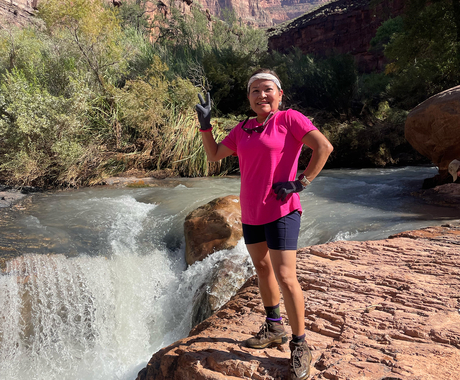By April Goettle, former staff member
Did you know the inner bark of the willow tree is the original source of aspirin?
On a recent August afternoon, we learned this fact from Barbara Salvatore, a Verdigre, Neb., resident whose mind is a storehouse of knowledge about medicinal plants. The workshop showed members of the Santee Sioux community and residents from surrounding areas just how much nature can provide, if you’re looking.
Nebraska offers an amazing variety of wild edible and medicinal plants. We didn’t have to go far to find abundance - we searched the riverfront park in Santee. Within minutes, the group had found chokecherries, acorns, cattails, blackseed plantain and more.
We located many flowering plants that are also edible, including milkweed (the flowers, early shoots and pods are edible at certain times) and Queen Anne’s Lace (the root is a tough but edible relative of the carrot).
Barbara also showed us how blackseed plantain can be used to treat insect bites.
The day concluded with a not-so-wild foraging of a local garden, where we discovered huitlacoche, or corn smut, a fungus similar to a mushroom that grows on corn. Also know as Mexican truffle, it is considered a delicacy in Mexican cuisine. Sample pieces were sautéed with fresh corn kernels for everyone to try. After initial hesitation, everyone was surprised by how much they liked it. The fungus is actually pretty healthy; it converts components in the corn into amino acids and other beneficial nutrients.
Join us for a spring foraging workshop, when a completely different group of plants, including spring onions, greens and more, will be available to eat. Details will be announced on our event page.
Tips to remember when foraging:
- Do not eat anything you cannot definitively identify.
- Never take more than you will use.
- Never take all of one type of plant from one area.





